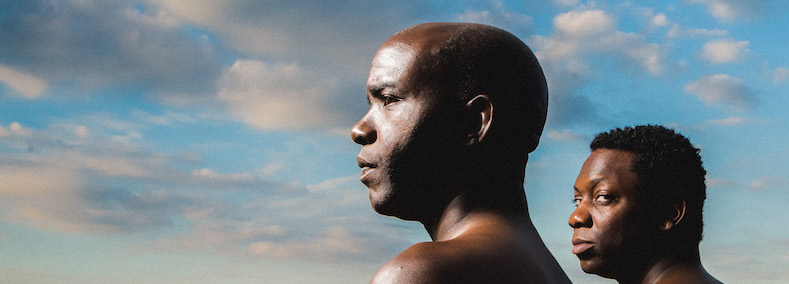Post-Show Discussion Activity

In this activity, students will have the opportunity to select three discussion questions they find intriguing and discuss each in a small group. If desired, a written response to one discussion question of each student’s choice may be incorporated.
ROUND ROBIN DISCUSSION ACTIVITY
- Activity Preparation
- Supplies:
- Post-Show Discussion handout (one per student)
- Set-Up:
- Students will be sitting in different groups during this activity; consider any mobility needs that students may have.
- Please note: The Island deals with challenging topics, including imprisonment, Apartheid, violence toward Black bodies, sexual references, and misogynoir (bias towards Black women/femmes). As needed, create opportunities for students to engage in reflection and self-care when preparing for, viewing, and discussing the topics of The Island.
- Supplies:
- This activity will take approximately 50 minutes, with an optional written component.
- Learning Sequence
- As applicable, review or establish classroom discussion norms. (~4 mins)
- Distribute the Post-Show Discussion handout to students. Have them select one question that most intrigues them from Round 1, one from Round 2, and one from Round 3. (~2 mins)
- Round 1
- How does this play make you (re)consider the prison system in the United States?
- Winston says at the beginning of the play, “I was sentenced to Life, brother, not bloody Death!” What is the significance of this quote in the context of the play and history?
- How do you interpret Winston’s description of what John’s life outside Robben Island may look like? Why does John react the way he does?
- Round 2
- Why is it important for John and Winston to rehearse for a performance in prison?
- Winston and John are performing Antigone in the prison. Why Antigone instead of any other play? How does the plot of Antigone add to your understanding of The Island?
- How do the production’s design elements (i.e. movement, sound, light, costume, and set) impact or enhance the meaning of the story?
- Round 3
- Hodoshe is never seen onstage. Why do you think this is? How would the play change if he were an onstage character?
- Why is Winston so resistant to playing Antigone? What role does misogynoir (bias towards Black women/femmes) play in the story?
- Winston says that Antigone is “child’s play.” John replies that this is what Hodoshe says about the concerns of the men in the prison. Why is this insult used by both of these characters?
- Round 1
- After students have selected their preferred question for each round, give them an opportunity to independently respond to each of their selected questions by recording their ideas under “Initial Thoughts.” Emphasize that students should be focusing on their ideas—they are taking notes rather than writing a paragraph. (~7 mins)
- Briefly poll students to get an idea of which questions they chose. Then, move students to sit with their peers with the same question for Round 1. If any group for questions A-C is particularly large, consider splitting them up into smaller groups. Ideally, groups should be 10 students or fewer. (~3 minutes)
- Prompt students to discuss their question for Round 1. Students may take notes on the discussion in their small group. (~10 minutes)
- Have students move to sit as a group based on their question selection for Round 2. Then, prompt students to discuss their question for Round 2. Students may take notes on the discussion in their small group. (~12 minutes)
- Have students move to sit as a group based on their question selection for Round 3. Then, prompt students to discuss their question for Round 3. Students may take notes on the discussion in their small group. (~12 minutes)
- As time allows, invite students to share their ideas. If desired, have students select one of their questions to respond to in paragraph form.
- This activity aligns with the following standards:
- Illinois Arts Learning Standards
- Anchor Standard 7: Perceive and analyze artistic work.
- Anchor Standard 8: Construct meaningful interpretations of artistic work.
- Anchor Standard 11: Relate artistic ideas and works with societal, cultural, and historical context to deepen understanding.
- Common Core State Standards
- CCSS.ELA.SL.1 Prepare for and participate effectively in a range of conversations and collaborations with diverse partners, building on others’ ideas and expressing their own clearly and persuasively.
- CCSS.ELA.R.3 Analyze how and why individuals, events, and ideas develop and interact over the course of a text
- Illinois Arts Learning Standards